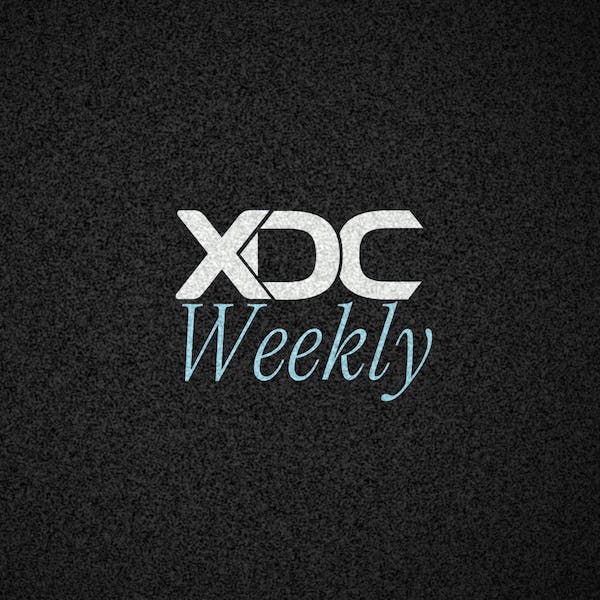Is there a less understood buzzword than NFT? Really, think about it.
Geek, photobomb, binge-watch, Brexit, fake news, single-use, climate strike, and lockdown. Those are the last 8 Collin’s Dictionary words of the year — prior, of course, to NFT. And you know what they all mean. In fact, you probably have opinions — even strong ones — about at least a few of them.
Being misunderstood is antithetical to the idea of a buzzword, but here we are. Non-fungible token, or NFT. I’d venture to say a majority of people can’t accurately define it.
NFT has become synonymous with hyper-inflated art or video clips for many people. At best, NFTs are commonly understood to represent something that exists only on the internet — a sort of digital ownership.
A couple of weeks ago, I had to explain what an NFT was to a man named Chris in a somewhat professional context far outside of the realm of blockchain. And in Chris’ experience thus far, that’s exactly what he thought: an NFT was used to prove ownership of art, or a song, or something else that only exists digitally. And it can be, but they can also represent a host of real-world assets.
I told Chris to imagine he was selling his suburban New Jersey home. He could tokenize his house — through the NFT’s metadata — and sell it in fractional parts. “You could basically sell your house in 20 pieces more easily than before,” I said. “Whoever owns the NFT could be part owner of your home.”
Chris: “So someone owns one room and another person owns another?”
Alright, failure on my part. This is not a pragmatic use-case, as the average single-family homeowner doesn’t want to chop up their house, even in terms of ownership. Fractional home ownership is not practical for most. What’s the best, practical way to explain NFTs with utility?
Let’s back up a little. The key to explaining an NFT may lie in its name.
A fungible token is easily exchanged for something else — like units of currency, which are mutually interchangeable. Therefore, a non-fungible token, by definition alone, is a unique token.
And in the context of blockchain, an NFT can’t be tampered with or replicated. The public ledger will always be able to show its history and prove it’s real. An NFT is a verifiable certificate of authenticity.
Some of the confusion surrounding NFTs may stem from naming something based on what it’s not. After all, we don’t call a credit card a non-cash-backed card. But that still might be better than non-fungible token, since fungible is a word that hardly anyone can define.
Unique token would be easier to understand. As would complex token. The idea of creating tokens that represent assets is rather intuitive. It’s a matter of what you call it, and how you explain it.
After the failure of my fractional home ownership NFT explanation, I needed a better one for Chris. I told him about the use of the XDC Network in the first trade finance-based NFT transaction. I told him how much time, effort, and inefficiency can be avoided through tokenizing assets into NFTs, especially for cross-border transactions. This made a lot of sense to him, but the NFT I described seemed totally detached from the notion of NFT that he’d come to know of the past year or so.
I can’t help but think the disconnect between the language in blockchain and our everyday language is at least loosely related to the overall disconnect between blockchain and the masses. This space is still in its infancy. It brings me back to when “World Wide Web” was a catchphrase, and people said dubya dubya dubya before citing a web address. Things change. Terminology develops.
Sometimes it doesn’t. We still “dial” phone numbers and listen to “albums”. The public’s understanding often develops around an outdated or downright confusing word that is so entrenched in the lexicon that it never leaves. Even if the term “NFT” is here to stay, its understanding will change as more people use them, and as blockchain innovations become more practical and accessible.
XDC Foundation is working to bridge the gap between those who understand building on and utilizing blockchain and the masses. Origin is a groundbreaking tool that lets users create tokens (and soon NFTs) for thousandths of a penny. The XDC Observatory is a one of a kind block explorer, emphasizing user-friendliness, customization, and transparency. XDC Concepts is a blockchain masterclass created by some of the top minds in this space to provide today’s creators with the tools to develop on the blockchain.
As for NFTs — or whatever you’d like to call them — we’ll continue to explore those right here on the foundation’s Medium, as part of a series examining the development of non-fungible tokens and what they can mean for all of us.
If you missed it, check out XDC Foundation’s own Quincy Jones’ recent Nasdaq opinion piece, where explores how NFTs may actually be the vehicle that brings decentralized finance to the masses.
The content above represents my own individual perspective as an XDC community member, and does not reflect the official stance of the XDC Foundation.


